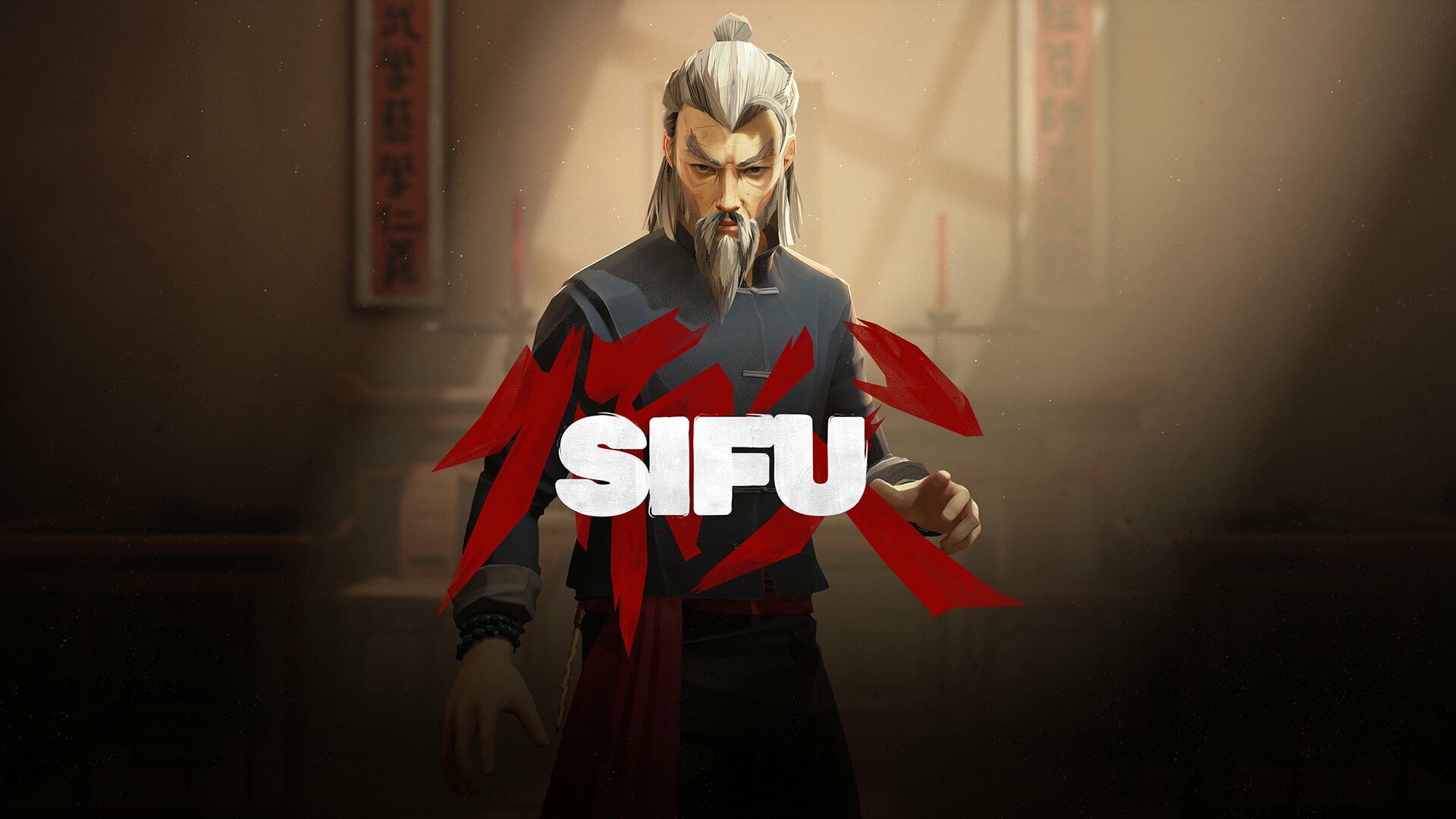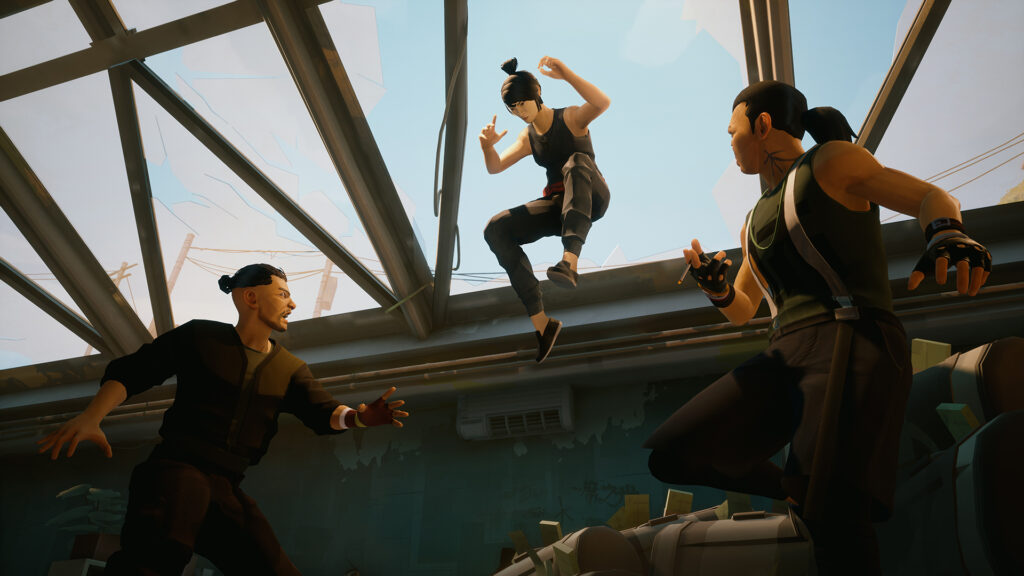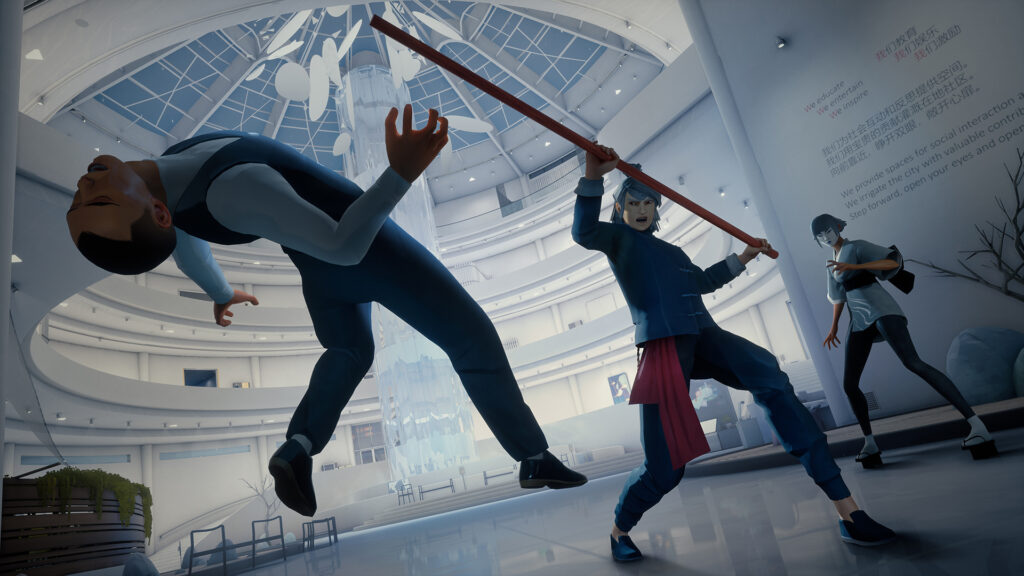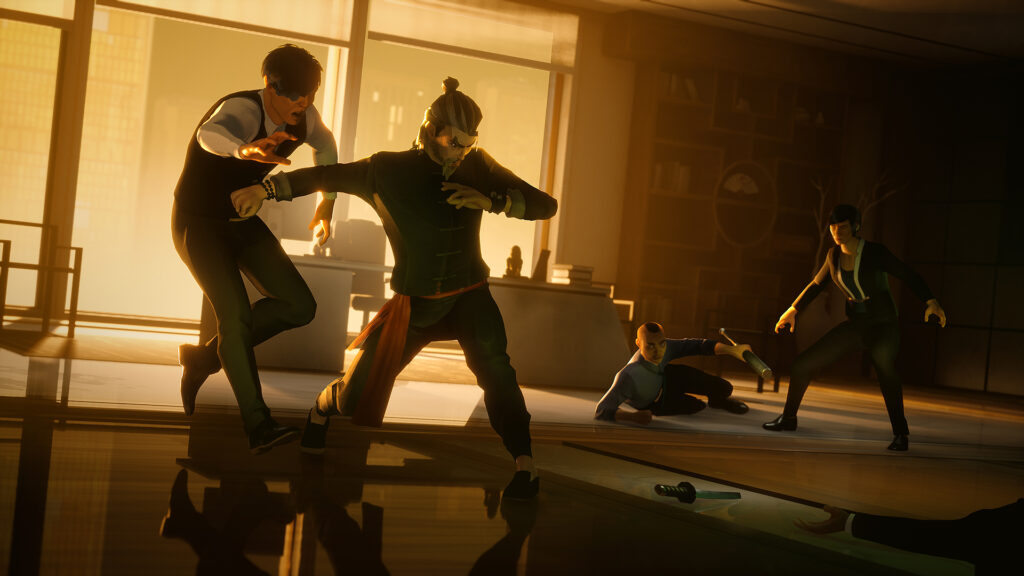Title – Sifu
Platforms – PS5, PS4 and PC
Release Date – February 8th, 2022
Developer – Slocap
Publisher – Slocap
MSRP – $39.99
ESRB – M for Mature
Disclaimer – This product is being reviewed on PlayStation 5. A review copy was provided by Sowcap Industries for the purpose of this review. This review may also contain spoilers for certain gameplay and story elements. Watch at your own risk, you have been warned. Gaming Instincts is an Amazon Affiliate and does gain financial benefits if you choose to purchase this product on this page.
An ancient Chinese proverb states: “When You Seek Revenge Dig Two Graves.” In the beginning hours, on your quest for vengeance in Sloclap’s Sifu, this statement is unforgivingly true. You will die over and over again. You will be pinned against a wall under an assault of punches, beaten down with pipes or bamboo poles, and go limp as you are thrown to the floor. Your enemies will surround you, punish your lack of experience, break your guard and your spirit, and most importantly kill you over and over and over again. Despite this, however, you will keep rising to your feet. You will memorize your enemies, learn their abilities, learn their weaknesses, and they will begin to fear you.
Sifu shares a similar element with martial arts at its core, which is repetition. Though not a long game, it will be hard to tell until you reach the end because of its constant death mechanic. You will see the same location on loop, sometimes starting mid-way through as you rise from the grave older but wiser, other times, because death caught up with you, you need to restart from the beginning. Each time you retry, though, your understanding of combat will increase, knowing how to parry your enemy instead of taking that fatal blow, or how to flow away from your enemies to make the fight more manageable. Just like the time-honored art of Kung Fu, through repetition comes mastery, and there really isn’t a combat system that is more enjoyable to master than the one presented here.
The Act of Revenge
A sifu, or Shifu in Chinese, is a master, usually a teacher. In the context of this game, it can refer to several things. First and foremost, the game’s main character is trying to avenge the death of his Shifu and father who are killed in the game’s first moments by a group of martial artists. In another context, it could refer to those martial artists themselves, straight out of a Chopsocky from the ’80s, every one of them a force to be reckoned with. Finally, and most importantly, it refers to the player who is on a quest that will see them become a master or die trying. It is a fitting term that creeps into every aspect of the game. A game that revolves around the pursuit of strength and skill or the corruption that comes with it.
The story itself, and the character’s quest for revenge serve as a backdrop for the events the player takes part in. After witnessing the death of the protagonist’s Sifu, the player can choose between a Boy or a Girl to play out the rest of the game. From there, the game jumps forward several years (with the actual age of the character at the beginning assumably twelve) to that character at age 20, now using the dojo they once trained in as a domicile to plot their revenge. From there, you are given the basics of what you are actually doing. On a table, you have your classic hitlist of names you plan to take revenge on, while next to the table is a board of pictures, places, and a red string where information gathered about your targets is stored.
Then, the game lets the player look out at the city and pick the location they plan to travel to. Each member of the antagonistic gang has an area and a time of day in which the player attacks them. Except for the opening moments of the game, these subtle clues are all the player has to go on to understand the narrative going forward. That isn’t to say that there is no additional narrative to help fill in the blanks as to each target and their connection to your Sifu. Occasionally, when you travel to a location, you will get dialog moments with characters there. In the second level, the club, a series of trials await the player before they can confront the big bad of the area, Sean. Sure, if you want to, you can start punching people left and right, and the game doesn’t punish you, but you never know what you might gleam if you simply have a conversation.
At the heart of the experience, Sifu also draws heavily from several types of Chinese action films from the 70s and 80s. The most noticeable influence is its ode to the Chopsocky films, of which Jackie Chan was a prominent actor. The game uses fast-paced, multi-person fights as the core of their experience with environmental navigation being paramount. While Jackie Chan was not the first to incorporate these concepts into cinema, films like Police Story helped popularize them in the west. The one-on-one boss fights should also feel familiar to fans of the film that brought the martial arts craze to the west, Bruce Lee’s classic Enter The Dragon. In this element, we can also see concepts drawn from the Hong Kong Blood Opera of the 80s, such as Hard Boiled. While this genre was particularly known for high octane shootouts, many of its tropes were known to carry over to chopsocky, and it was also not limited to gunplay either. These films also explored morally ambiguous heroes, something that Sifu makes sure to drive home in its simplistic narrative.
Another genre that the game draws some influence from is Wuxia martial arts films, that deal with fantastical elements. While much of the game is grounded in gritty realism, there will be multiple moments in which magic is applied to the narrative, the most obvious being the use of a magical talisman that can bring the user back from the dead at the cost of his age. Another example of this is a scene involving the first boss, in which he holds his hand over a plant causing it to grow through his spiritual energy. In the club, some moments send the character back in time, jumping between a neon glistening dance hall, and a burning village engulfed in flames. Boss fights themselves seem to harken back to films like Hero, Crouching Tiger, or Hidden Dragon in their over-the-top presentation that teeters on both the beautiful and fantastical.
The Sound of Bones Snapping
Sifu draws its simplistic nature across every element of the experience, including the soundtrack. Howie Lee, who had no experience with video games, was brought on to compose the soundtrack, which consisted less of timers and more of wipes between each phase the player might go through. Levels pile on the action, never letting the player go too long without a face to punch or a leg to break, but when it does the game matches these moments with a sound that mixes traditional Chinese instruments with electronic timing. These instruments never overpower where the player is or what they are doing, but help to set the mood. Honestly, I found myself stuck in place every so often just letting the ambiance wash over me.
When a fight breaks out, the music switches to match the rapid pace and brutality of the fight. A loud percussion track matches perfectly with the solid sounds of punches and blocks that sound distinct while being enticing, helping you feel like a martial arts master despite never having thrown a punch in your life. Each area the player travels to has a distinctive look, and, therefore, distinctive sounds that go along with them, and not a single one feels out of place.
As stated above, all levels in the game have a distinctive feel. Each one is set in a different part of the city and manages to offer a diverse roster of locations to fight your way through. Not only that, these levels are multi-dimensional, allowing players to find items that they can use upon return to a previous location. Players can also get the ability to bypass certain areas, unlocking backtracking points that make later runs easier. These levels do have some issues in their design though, the most basic being that they are short. The whole game is short, being beatable in only a few hours, but once the player has mastered the trails of a particular stage they will begin to notice just how easy it is to navigate from start to finish.
Another issue with them is their simplistic design. Each level manages to have moments that stand out compared to other levels, which is a strong point looking back but they largely fluctuate between an arena fight, a hallway fight, an arena fight, and another hallway fight. The things that occur between points A and B manage to make this less noticeable, but once you have to run a level repeatedly, the design becomes noticeable. There are deviations, and how the levels manage to connect these segments is a source of enjoyment, even after it has become a noticeable design choice.
Playing the game on the PlayStation 5 also affords the player certain elements thanks to the DualSense controller. The speaker embedded in the controller creates a lot of the sound effects, such as the pouring rain in the first segment, the money counting machine as soon as you enter the club, and so many other sounds that come from the controller instead of the screen to immerse you in the experience. The noise that continued to excite me long after I completed the game and continued to fight enemy after enemy, trying to complete everything, was the loud chime from the controller speaker when you take down an opponent. Other enjoyable noises were the chime it made as you purchased a new ability to bring into combat. The dual sense has continued to delight me as I play more PlayStation 5 games, and Sifu has continued the trend.
To Know Kung Fu
Sifu uses the real-life martial arts style that shares its name with the legendary martial artist that invented it, Bak Mei, who himself has been a character popularly depicted in Wuxia martial arts films. To the west, he is probably better known by the name, Pai Mei, through his depiction in Quentin Tarantino’s Kill Bill Vol. 2. It is best characterized through its emphasis on strong, close-quarters strikes, which should become readily apparent as you progress through the game.
The best game I could use to describe the combat of Sifu would be to harken back to the From Software title, Sekiro: Shadows Die Twice. At its core, Sifu is a fast-paced action game in which groups of enemies will surround you and attack from all angles, but just like Sekiro, the best offense is a strong defense. Learning the rhythm of enemies and quickly maneuvering to parry them is the best way to set them off balance and go in for the killing blow. That is to say that when the player breaks an enemy’s structure, as it is called in this game, they can perform a takedown on that enemy, which instantly defeats them and restores a small amount of health to the player. Everything you do affects the structure, with blocking, attacking, and dodging doing so as well. The health of your enemy arguably matters less than their structure, though you will defeat enemies through health as well.
A way the game manages to play with expectations is that several groups will have stronger enemies that become even more powerful upon an attempted takedown. This can heavily change the flow of combat as the group of remaining opponents now seems even more daunting with enemies that can tear through your health with one well-placed kick. That being said, I never found myself in combat where I couldn’t manage to reverse the momentum of a fight I was losing with a well-placed parry into a counterattack. As I have consistently stated, in the beginning, you can expect this combat to be pretty hard to navigate, but it gets easier as you continue to take on groups.
Dying isn’t the end, but it can make your life far harder moving forward. Each time you are defeated in combat, your character’s death counter increases, adding the number it is currently on to your total age. There are ways to cause the death counter to decrease, but there is no way to reverse the aging effect once your character picks up an additional year. If you can keep this to a minimum you can float from combat to combat only increasing a year or two, but if you are struggling at a specific moment in the game, those years can add up. For instance, dying three times without a decrease to your age counter will actually age you by six years in total, and if you are struggling on a boss that number can go up even higher quickly.
The player’s 20’s will not see them punished much as they will only lose access to one or two abilities, but at age 30, you will begin to feel the consequences of dying. Once the player hits that age they will see their health begin to decrease while their damage will go up. The player can unlock combat abilities through a shrine that will also begin to lock starting at age thirty, with shrine buffs also beginning to lock. At age 60, most abilities will be locked, with a noticeable chunk of your health bar gone. Reaching age 70, the final piece of your talisman will be broken, making this your final life. Upon death, you will be given the ability to try again.
Death will serve as the most convenient place to upgrade your abilities, though as stated above, you can do so at the Dragon Shrines as well. As you defeat enemies, you will unlock experience that can be spent unlocking new moves that add to the combat experience and make you a more deadly opponent. Players can choose to buy abilities for use during a single-life or invest even more experience into the ability so it carries over every life. It is more advantageous to focus on a single skill at a time, with your experience toward the Perma unlock never undoing, as again you will find yourself retrying levels multiple times as you work to piece together the game.
Levels always revert to the youngest age that you reached them, keeping the stats from that run over another run. If you are currently doing a run, going to the next stage will keep your age and progress on that run, but exiting that run will again revert it to your best age. This means that even if you have made strong progress in the story, there is a high chance you will still go back trying to widdle your age down to make the current level you are on more manageable. Getting to the next level after getting tossed around by the boss on the level before can be a pain, especially if your death counter is over 5 and your age is over 50. You can still continue to the next level, learning everything you need to know while gaining experience for abilities before going back and trying to beat it with a lower age.
As far as the actual structure of levels is concerned, the term roguelike has been tossed around, but I would argue this is more soul-like. Enemies always spawn in the same locations with everything playing out the same way in each run you do. That means that groups of enemies will remain the same, locations of powerful enemies will remain the same, the only thing that might change is which enemies will power up upon a takedown attempt. This design works to a degree because, again, the game is about mastery through repetition, and with the combat as amazing as it is, this remained a non-issue for me long into the endgame. That being said, it bears some noting that you can expect levels to operate the same way each time you fight your way through
To cap off each level, you have to put everything you have learned to the test with a two-form boss fight. Bosses will be harder to break than normal enemies by a lot, forcing you to engage them cautiously to take advantage of their patterns, which is no easy feat considering how fast some of them will attack. A well-timed dodge can open the boss up for a quick flurry of attacks, a focus attack can give you a few reigns of hits on them, or you can play defensively and attempt to drive up their structure gauge slowly. Most bosses, despite having patterns, have multiple ways you can react to them, making the fights that much more fun with every playthrough.
Final Verdict
Sifu does two things extremely well. The first of those is its callback to the old school era of Kung Fu movies I grew up on, with the second being delivering a brilliantly crafted and breakneck-paced combat system that manages to be enjoyed long after other elements of the game wear thin. And even when those other elements wear thin, it is well into the late-game trophy grind. Sloclap has taken what they have done in the past and pushed the envelope further. While it doesn’t necessarily reach its fullest heights, it paints a bright picture moving forward. Sifu, like the act of revenge, is more than the sum of its parts and an experience that will stay with you even after the credits roll.
Stay tuned at Gaming Instincts via Twitter, YouTube, Instagram, and Facebook for more gaming news.







